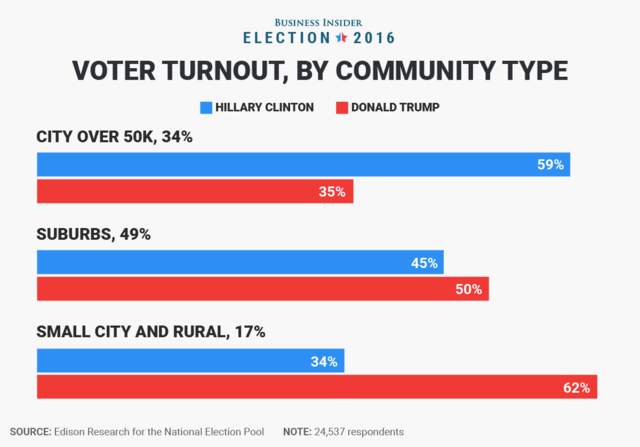For most of my career as a media executive I created radio programming for the uncool majority. Much of my success was the result of understanding and serving the people who listen to Howard Stern. For the first ten years he was on the air it was dangerous to even admit to listening to him. But the ratings were right there, dominant shares of listeners in city after city loving Howard. And in city after city, those listeners had to be darn careful who knew they loved Howard. They didn’t realize it at the time, but the day would come when many of them would be referred to as “deplorables.”
Smart brands like Snapple and Steven Singer Jewelers built their businesses by embracing Stern’s listener. Note that when Snapple’s original owners sold the brand to a conglomerate, the marketing people at the conglomerate were all offended by the association with Stern. They pulled the Stern ads. Sales tanked. Value of the brand plummeted and forced a desperate sale of the company.
For years I called on media buyers who were appalled at the notion of advertising on Howard. One Verizon media buyer and another Osco buyer, among others, were very worried about their messages being placed near Stern’s candid content.
Brand execs who want true, sustained growth seek marketing and advertising initiatives that mirror the interest needs and tastes of their target customers, i.e. people with money and need, and never ever let their personal tastes and self-image determine their company’s ad spends.
Ultimately, admitting to listening to Howard and liking Howard became totally okay. How did that happen? Three factors:
1. Listeners who were 18 when they first heard Howard are now 50.
2. The New York Times wrote a glowing article about his skills as an interviewer.
3. He was a judge on NBC’s America’s Got Talent.
How has the show changed over thirty years? Not much. On the same Stern episode, one might hear a well-prepped interview with Gwyneth Paltrow followed by an interview with King James and Granny Fanny. King James is a porn star and so is Granny Fanny — they are a team! But now the optics have shifted attention to Howard’s formidable skill of interviewing people like Paltrow.
Howard has always been a brilliant interviewer. It was 27 years ago when he hosted a show on E! interviewing major guests. First guest on that series? Donald Trump! But thanks to the New York Times, it’s permissible to admit in mixed company that Howard is a brilliant interviewer. There is no news there; the Times is thirty years late to the story.
Even the Hamptons now bless Mr. Stern.
Howard’s authentic relationship with his listeners resulted in spectacular sales for Stern’s advertisers. Howard was proud of his base, proud of his rapport with them and brilliant at selling product into the needs of their life.
Just Like Deplorables
Trump voters are very shy about admitting that they voted for our President. The closer they live to Manhattan, the shyer they become!
But like early Stern fans, “deplorables” are a passionate consumer base begging to be wooed and served. How do I know? Donald Trump wooed them and now he is President of the United States, his first elected job. What did he know and how can that knowledge benefit your company?
Get to the Point
Advertising to the 62,980,160 deplorables requires recognition of their daily routine. The deplorables’ average income and age was approximately the same as those who voted for Hillary Clinton. (Editor’s note: Clinton unwittingly popularized the term with her famous remark about “a basket of deplorables,” for which she later apologized.) The key differentiator is where deplorables live. As the chart from Insider.com reveals, they live in their cars. People in most cities of over 50K do not live in their cars. Residents of New York, D.C., Chicago and San Francisco live in mass transit and on their feet. This single fact is why the pundits and researchers missed the election call.

Customers in the suburbs and rural communities live in their cars all day.
- To sell to “deplorables,” select media that reaches them in the car. Radio, outdoor, point of purchase at gas station.
- Get to the point. President Trump understood that deplorables are very busy. The competition for this consumer’s attention is kids in the back seat, having to pump gas, the store is about to close, or the shift is beginning. Messaging to them must be clear, in words and language quickly grasped.
- These consumers live in the moment. They do not have time to process irony, cuteness or subtlety. Repeatedly state the product’s characteristics, benefits and brand name. These potential customers are not dumb; they are driving.
- Elitism is repulsive to a deplorable. Copy points should stress that the product is proven, guaranteed, easily found and inclusive. It just works.
- Celebrate their determination to act on their beliefs even if it leads to isolation. Make the potential buyer feel part of a well defined, proud group — your customers!
- Hire a suburban based ad agency. Cyclers going home to Park Slope or Santa Monica are probably not the creatives that will lead you to the heart of a deplorable.
And from now on, let’s just call them valued customers with money, credit cards and a need for your product. These are the people who build your car.
Click the social buttons above or below to share this story with your friends and colleagues.
The opinions and points of view expressed in this content are exclusively the views of the author and/or subject(s) and do not necessarily represent the views of MediaVillage.com/MyersBizNet, Inc. management or associated writers.

